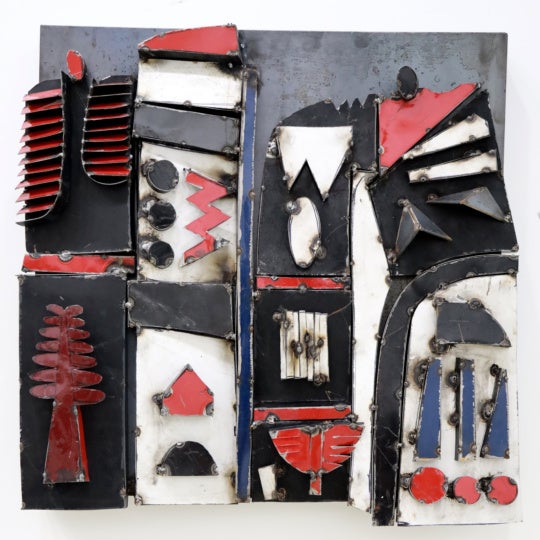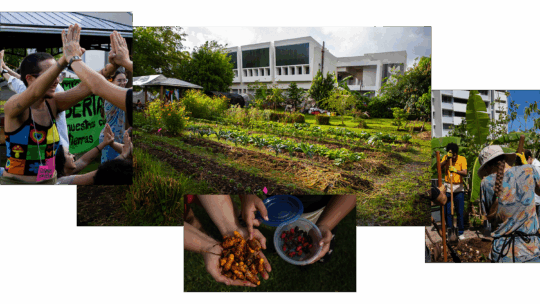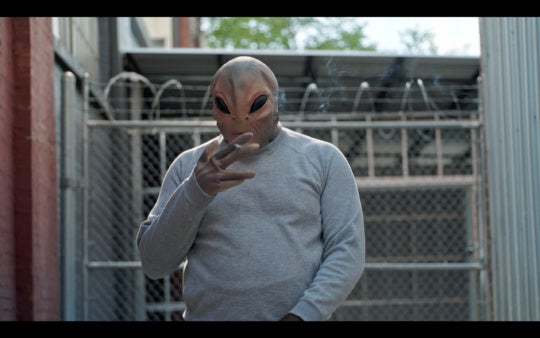Contemporary art always has its ups and downs, and that was reflected in the range of news stories coming out of the South in 2017.
Check out our contributors’ favorite exhibitions of 2017 here, and the movers and shakers here.

Anne Lambert Tracht, art consultant
The announcement by Mayor Kasim Reed of the city’s acquisition of $4.4 million’s worth of public art by some of the most respected artists in the world is a major step forward for public art in Atlanta.

Dwayne Butcher, art critic
Easily the two most significant news stories in Memphis happened the same week, involving two institutions next door to each other in Overton Park. In a surprise announcement in September, Executive Director Emily Neff issued a press release saying that the Brooks Museum was moving to a riverfront location in downtown Memphis after being in Overton Park for 101 years. The building has long had problems with leaks, humidity, lack of seismic protections and storage. The new property on Front Street will address these issues as well as allowing for a more open concept. The galleries at the current space are too limiting, too small, and simply too cumbersome to navigate. The move will allow for the opportunity address these concerns as well as spearhead the current riverfront renaissance.
A couple days later, the Memphis College of Art announced that, effective immediately, it would no longer be accepting new students. They will be doing a teach out, staying open until the most recently enrolled class graduates in May 2020, if they can stay open for even that long. Plagued by a dwindling enrollment, interestingly attributed to the free community college program in Tennessee, poor and suspect real estate decisions over the last several years, and an administration that lost touch with its identity and purpose are main factors in why the college could not stay open. The cultural loss to this city as a result of MCA closing is impossible to calculate and will be felt for generations.

Haynes Riley, artist and director of Good Weather Gallery
The University of Arkansas received $120 million from the Walton Family Foundation to establish a School of Art.

Brian and Carolyn Jobe, cofounders of Locate Arts
In Tennessee, the opening of the 21c Museum Hotel (Nashville) brought us 24-7 access to a large, rotating collection of contemporary artworks. Stove Works (Chattanooga) launched their crowdfunding campaign, moving ever closer to opening their epic contemporary art venue. And, Tops Gallery (Memphis) opened their second space at Madison Avenue Park featuring a dynamic gallery behind glass in an unexpected location. Crosstown Arts (Memphis) moved into their new space in the impressive one-million-square-foot Crosstown Concourse building. They have begun programming exhibitions and hosting artist residents there.

Chris Vitiello, art critic
Everyone here is talking about space … and then looking at their hands. The nodes of the Research Triangle aren’t particularly big towns, so they’ve redeveloped very quickly, and the worthless spaces that artists usually occupy became unaffordable so fast that neither artists nor organizations have been able to stake a claim. Nor are there ample undervalued parts of our towns to head into without being unabashed gentrifiers. So existing art spaces are closing or moving, and new art spaces are opening up. Gallery and performance spaces are reshuffling rapidly, trying to figure out how to afford themselves or how to retain their identity within commercial development partnerships. Studio space inventory is severely reduced, so artists are bringing their production back into their living spaces. It’s not all a straightforward capitalist tragedy, either — some arts communities are being forced to change and innovate because of the development-gentrification cycle.

Brett Levine, art critic
Perhaps the biggest Birmingham stories were the retirement of Gail Andrews as Director of the Birmingham Museum of Art, and the appointment of Graham Boettcher as her replacement. Neither were necessarily surprising, with Boettcher having risen through the curatorial and administrative ranks of the institution. On a more sombre note, the passing of groundbreaking artist and arts administrator Anne Arrasmith, founder of the artist-run initiative Space One Eleven, shook the Birmingham arts scene to its core.
Rachel Reese, associate curator of modern and contemporary art at Telfair Museums
Budget cuts affecting arts funding and support in Savannah.
http://www.wtoc.com/story/34001047/budget-cuts-for-city-of-savannah-prompt-outcry-from-organizations
http://wsav.com/2016/12/08/cultural-groups-react-to-budget-cuts-from-city-of-savannah/
http://gpbnews.org/post/after-outcry-savannah-city-council-moves-restore-arts-funding
http://savannahnow.com/accent-column-news/2017-01-01/savartscene-arts-community-city-council-save-arts-budget?page=3
http://www.wjcl.com/article/preliminary-2018-budget-would-eliminate-city-funding-for-the-arts/13969431




